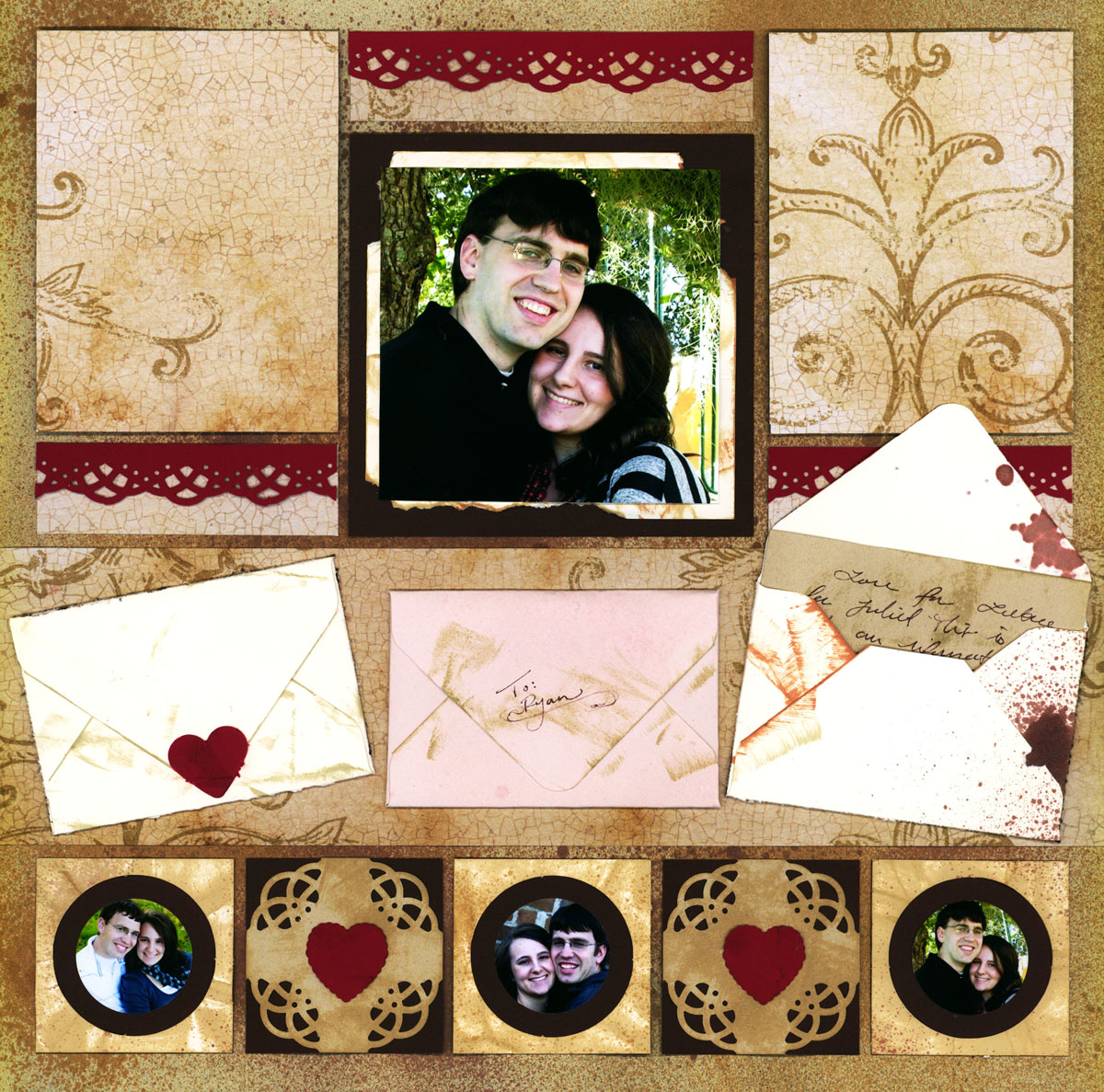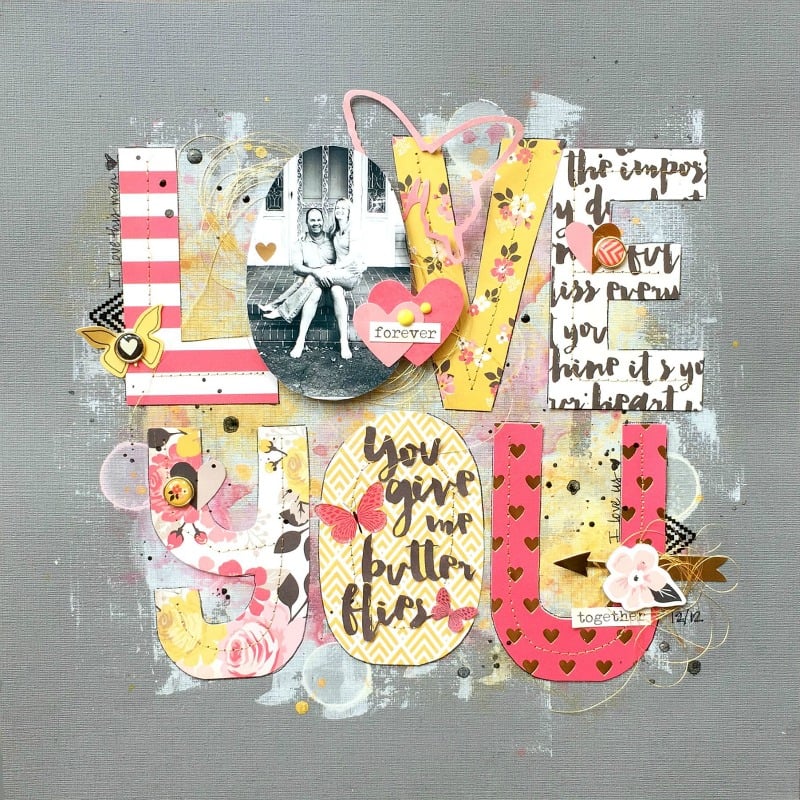Scrapbooking has stood the test of time as one of the most beloved creative hobbies around the world. From preserving precious memories to expressing artistic talents, scrapbooking offers a unique experience for enthusiasts. But why do people love scrapbooking so much?

The Emotional Connection to Scrapbooking
Preserving Memories
At its core, scrapbooking is all about memory preservation. For many, it serves as a physical diary, cataloging important moments in life through photos, writings, and keepsakes. Whether it’s a family vacation, a wedding, or the birth of a child, scrapbooking captures these moments in a tangible way that digital platforms often fail to replicate.
Unlike just storing photos on a phone or social media, scrapbooking allows for a more meaningful interaction with memories. You can include hand-written notes, ticket stubs, or pressed flowers from special events. This makes each scrapbook a unique, personalized narrative of your life, created by your own hands.
Creating a Personal Legacy
Many people also see scrapbooking as a way to leave behind a legacy for future generations. Instead of simply passing down photos, a scrapbook can tell stories in greater detail—complete with written memories, dates, and explanations of the events captured.
Fun Fact: Studies show that scrapbooks created by grandparents or parents are often cherished more than simple photo albums because they add personal touches that give context to family history.
Emotional Catharsis
Another major reason why people love scrapbooking is that it serves as an emotional outlet. It allows individuals to reflect on happy times, providing a sense of comfort. The process itself—choosing photos, selecting layouts, and adding decorations—can also be meditative and help reduce stress.
Many people even turn to scrapbooking as a therapeutic tool to process grief or celebrate life transitions. For example, some individuals create memory books for loved ones who have passed away, using the creative process to help cope with loss.
Why Scrapbooking is a Creative Outlet
A Unique Form of Artistic Expression
One of the key reasons why people love scrapbooking is that it offers a unique and highly personal form of artistic expression. Unlike traditional art forms such as painting or drawing, scrapbooking combines multiple mediums—photography, writing, and crafting—allowing for a blend of creativity. You don’t need to be a trained artist to create something beautiful. The craft allows anyone to tap into their creativity, mixing and matching photos with decorative papers, embellishments, and even handwritten notes or quotes.
Many people find satisfaction in how scrapbooking brings their memories to life. Every layout you design tells a story, and how you choose to arrange your photos, colors, and decorations reflects your personality. It’s a perfect way to make something both aesthetic and meaningful at the same time.
Fun Fact: Scrapbooking is one of the few crafts where you don’t need expensive tools or materials. Many scrapbookers start with a few simple supplies like colored paper, markers, and photos, and gradually build their collection of tools and embellishments as they become more experienced.
Customization and Personalization
Scrapbooking is all about customization, and this is one of the things that makes it so appealing. Each scrapbook page can be tailored to your unique style and the memory you’re preserving. You have full control over everything, from the type of materials you use to the theme of each page. Whether you prefer a minimalist design with clean lines and neutral colors or a more vibrant, eclectic style with lots of textures and patterns, scrapbooking offers limitless creative freedom.
Popular Customization Options include:
- Themes: Choose a theme for your scrapbook, such as holidays, travel, or family milestones.
- Layouts: Experiment with different photo arrangements to create balance and flow on each page.
- Color Palettes: Use colors that evoke the mood of the memory you’re capturing—soft pastels for a baby album or bold, vibrant hues for a travel journal.
- Embossing & Die-Cutting: Add depth to your pages with special techniques like embossing or die-cut shapes.
The sheer variety of materials available today—from patterned paper and stickers to washi tape and ribbon—makes it easy for scrapbookers to create something that is truly their own.

The Social Aspect of Scrapbooking
Building a Community
Another reason why people love scrapbooking is the strong sense of community it fosters. While scrapbooking is often seen as a personal and solitary activity, many scrapbookers are part of thriving communities both online and offline. These communities offer a space for people to share their ideas, projects, and tips, helping to create a supportive and encouraging environment.
Social media platforms such as Instagram, Pinterest, and dedicated Facebook groups are filled with vibrant scrapbooking communities. In these spaces, individuals post their work, give each other feedback, and share tutorials or new techniques. Many scrapbookers even participate in online challenges, where members are tasked with creating pages based on a specific theme or using a limited set of materials.
Additionally, physical scrapbooking groups, meetups, and workshops are common in many areas. Attendees bring their supplies, share ideas, and often work on their projects together. These gatherings can help build lasting friendships around a shared passion.
Case Study: In 2020, during the COVID-19 lockdown, scrapbooking communities on platforms like Zoom experienced a surge in participation. People sought out creative outlets and connections with others, and online scrapbooking meetups provided both.
Scrapbooking Events and Retreats
Beyond informal group meetups, there are also large scrapbooking events and retreats where enthusiasts gather to share their love for the craft. These events often feature workshops led by experts, offering an opportunity to learn new techniques or explore new products. Many retreats are multi-day affairs that allow scrapbookers to focus on their projects, free from the distractions of daily life.
Some popular scrapbooking events include:
- Creative Scrapbooking Retreats: These weekend getaways are designed for scrapbookers to bond, relax, and work on their projects.
- Scrapbook Expos: Large conventions where participants can attend classes, visit vendor booths, and participate in creative challenges.
- Crops: Smaller local events where people gather to work on their scrapbooks together.
The social aspect of scrapbooking is often one of the driving factors that keep people engaged in the hobby. It’s not just about creating beautiful pages but also about sharing those pages and the process with others who appreciate the craft.
The Therapeutic Benefits of Scrapbooking
Scrapbooking for Mindfulness and Relaxation
One of the most profound reasons why people love scrapbooking is the therapeutic benefits it offers. For many, scrapbooking is more than just a hobby—it’s a form of mindfulness that promotes relaxation. The act of focusing on the small, creative details—like selecting the right paper, arranging photos, and choosing embellishments—helps individuals immerse themselves in the moment. This type of concentrated activity can act as a mental break from everyday stressors.
Research shows that creative activities like scrapbooking stimulate the brain’s reward center, releasing dopamine, which is often referred to as the “feel-good” chemical. Engaging in creative tasks can enhance mood, lower stress levels, and even improve mental clarity.
Data Insight: A 2018 study published in the American Journal of Public Health revealed that creative practices such as scrapbooking can enhance emotional well-being, reduce symptoms of anxiety, and improve cognitive function.
Many scrapbookers describe the process as meditative. The repetitive nature of cutting, gluing, and arranging elements allows them to enter a flow state, where they become fully absorbed in the task at hand. This flow can contribute to a sense of calm and fulfillment, making scrapbooking a great tool for self-care.
Scrapbooking as a Coping Mechanism
For many, scrapbooking serves as a way to process and cope with life’s more challenging moments. By documenting difficult experiences—such as the loss of a loved one, a major life transition, or even a significant challenge—people can work through their emotions in a constructive way.
Memory scrapbooks, often created in honor of a loved one who has passed away, allow individuals to preserve their memories and celebrate the life of the person they’ve lost. This act of remembering and curating helps many people deal with grief in a healthy way.
Example: A popular trend in the scrapbooking world is creating “healing journals” or “grief scrapbooks.” These projects combine photos, journal entries, and keepsakes from difficult times, offering an outlet for emotional expression and healing.
Additionally, scrapbooking can help people chronicle positive changes in their lives, such as recovery from an illness or personal growth after a challenging period. This act of documenting growth and progress can provide a sense of closure and accomplishment.

Scrapbooking as a Family Tradition
Creating Family Bonds Through Scrapbooking
Scrapbooking is not just a personal hobby—it’s often a family affair. Many families use scrapbooking as a way to bond and share experiences. Sitting down together to create a scrapbook can bring family members closer as they revisit cherished memories and collaborate on creative layouts. Parents and children often enjoy this shared activity, using it as an opportunity to talk about family stories, values, and traditions.
Some families have made scrapbooking a generational tradition, where scrapbooks are passed down from one generation to the next. These scrapbooks become heirlooms, preserving family history in a way that goes beyond just photos or digital albums. Each page reflects not only the events captured but also the personal touches and emotions of the people who created it.
Fun Fact: A study by the Journal of Family Communication found that families who engage in shared storytelling activities, such as scrapbooking, often have stronger emotional bonds and better communication skills.
By working on a scrapbook together, families can also develop a stronger sense of belonging. Children, in particular, feel more connected to their heritage and their family’s journey when they see their own contributions valued in the scrapbook. Whether it’s capturing a family vacation or documenting major milestones like graduations and weddings, the process of working together builds lasting memories in and of itself.
Teaching Children the Art of Scrapbooking
Introducing children to scrapbooking is not only a fun activity but also a way to teach important life skills. Scrapbooking allows kids to express their creativity while also learning about planning, organization, and storytelling. By selecting photos, choosing embellishments, and writing short captions, children develop a sense of responsibility and pride in their work.
Scrapbooking can also enhance fine motor skills in younger children, as they practice cutting, gluing, and handling small decorative items. It’s a hands-on activity that encourages attention to detail and patience—skills that are valuable in many areas of life.
Educational Benefits of Scrapbooking for Children:
- Creativity: Kids get to experiment with colors, textures, and layouts, developing their artistic talents.
- Storytelling: Writing captions and descriptions helps children improve their writing and communication skills.
- Focus and Patience: The process of planning and creating a page teaches kids how to focus on a task from start to finish.
- Teamwork: When working with parents or siblings, children learn how to collaborate and share ideas.
Example: A popular scrapbooking project for children is a “school year” scrapbook. Throughout the year, kids can document their school experiences by adding photos, report cards, and drawings to the book. By the end of the school year, they have a personalized keepsake that highlights their academic journey.